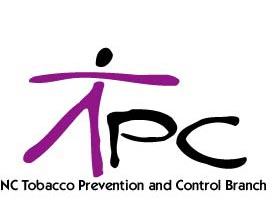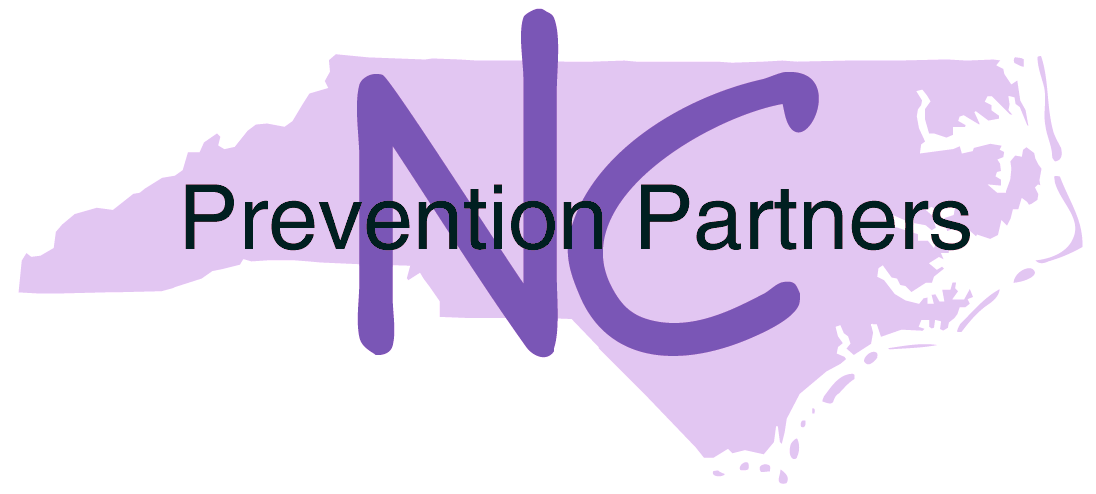"Caring is
the root of courage. Courage is the fuel of commitment.
Commitment
is the foundation of perseverance. Perseverance is the agent
of
change."
Joe Tye, Never
Fear, Never Quit
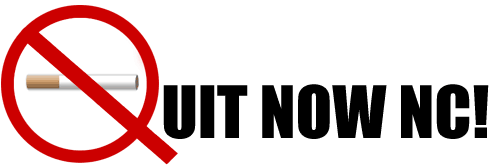
Launching Quit Now NC!
 Introduction and Thanks
Introduction and Thanks
The July 10th launch of Quit Now N.C.! was a great success! Over three
hundred people participated in the Launch. We would also like to
extend our particular thanks to our conference sponsors who made the
event possible: the North Carolina Tobacco Prevention and Control Branch,
the North Carolina Cancer Prevention and Control Branch, the American
Cancer Society, the March of Dimes, and Medical Review of North Carolina.
Quit Now N.C.! is a collaborative cessation network and is coordinated
by North Carolina Prevention Partners (919 966-9137)
 Highlights from the evaluations and goals
Highlights from the evaluations and goals
Conference evaluations indicated people are enthused by Quit Now N.C.!
and the new resources. Participants came away from the conference
with plans for utilizing and expanding the Quit Now N.C.! program in
their areas. Many plan on contacting radio and TV stations, newspapers,
and newsletters to promote the Quit Now N.C.! resources. Another common
goal is to partner with other organizations to provide a stronger smoking
cessation system within their region.
 The National Cancer Institute and American Legacy Foundation’s
Telephone Quitlines for Smoking Cessation Summary
The National Cancer Institute and American Legacy Foundation’s
Telephone Quitlines for Smoking Cessation Summary
- The National Cancer Institute has a smoking cessation
telephone quitline. This resource is free and open between 9:00 am
and 4:30 pm on weekdays. Spanish interpreters and materials are available.
There is a separate TTY (telephone typewriter for the hearing impaired)
phone line available 1 (800) 332-8615. Callers may talk to counselors
as often as needed. Counselors send materials and develop individual
cessation plans. Counselors can make recommendations about the use of
pharmaceuticals for quitting.
The NCI quitline is at (877) 44U-QUIT. The National Cancer
Institute also has comprehensive information and resources, including
instant messaging counseling services, on-line at www.smokefree.gov.
- The American Legacy Foundation quitline is
designed to meet the needs of pregnant smokers. Upon calling, an operator
collects contact information and sends materials. The operator connects
the caller with a smoking cessation counselor. This is a proactive
phone line, which means the counselor may call back to check upon your
progress. Spanish interpreters and materials are available, along with
TTY (telephone typewriter) resources for the hearing impaired.
The Legacy Foundation hotline is administered in conjunction with
the American Cancer Society; therefore, there are resources available
for all tobacco users.
The Legacy smoking cessation quitline is at (866) 667-8278
twenty-four hours a day, seven days a week. Legacy on-line resources
are available at americanlegacy.org/greatstart/html.
- New Smoking Cessation Resources Released at the
Quit Now N.C.! Conference
- Quit Now N.C.! Smoking Cessation
Guide - the Guide lists smoking cessation programs located
throughout North Carolina. The Cessation Guide is located at quitnownc.org.
- Starting the Conversation
– Are you ready to quit smoking? This new smoking cessation tool will
help physicians meet the Surgeon General’s guidelines by incorporating
the five A method of: ask, advise, assess, assist, and arrange. To order
copies, please contact the Tobacco Prevention and Control Branch at
(919) 733-1340.
- Quit Now N.C.! website
is located at quitnownc.org and lists comprehensive information and
resources.
- Quit Now N.C.! outreach and
recruitment brochure encourages health care professionals
to join the Quit Now N.C.!
- Quit Now N.C.! Consumer Flyer
lists cessation resources.
North Carolina Prevention Partners is excited by the response that the
Quit Now N.C.! launch received. The conference was such a success and
the toolkit in such demand that we hosted a condensed version of the
conference at our annual conference on September 17 in Chapel Hill.
Thanks again to everyone who contributed to the success of the conference.
In the words of one inspired participant - “It’s a great day for N.C.!”
Quit Now N.C.! is supported with funding from the North Carolina Tobacco
Prevention and Control Branch
and the North Carolina Cancer Prevention and Control Branch.
If you have questions, please call Kalila Spain at (919) 966-9137
or Melva Fager Okun at (919) 843-4455.
Table of Contents
New State Law
Regarding Tobacco Use in Schools 
On July 16, 2003 the North Carolina General Assembly passed SB583 "Tobacco-Free
Schools." The new state law requires all school districts to adopt and enforce,
at minimum, a policy prohibiting all tobacco products by everyone during
school hours. More importantly, the law establishes clear non-preemptive language
that allows school districts to adopt and enforce a 100 percent tobacco-free
school policy that prohibits all tobacco use by everyone at all times in
school buildings, school facilities, on school property or during school-related
or school-sponsored events.
During the past school year the number of school districts with a 100
percent tobacco-free policy has increased from 13 to 30! Currently,
that means that 26 percent (national average is 45 percent) of North
Carolina school districts now have a 100 percent tobacco-free school
policy. North Carolina is still far below the national average, but
the Branch is working closely with the North Carolina Health and Wellness
Trust Fund Commission, North Carolina Department of Public Instruction
and other partners to greatly increase the percentage of tobacco-free
schools in North Carolina over the next couple of years.
For more information, please contact Suzanne DePalma at (919) 715-4409
or email. You can access a list of all the tobacco-free school systems in
North Carolina, with contact information, at NC Tobacco Free Schools.
Table of Contents
2003 Youth Tobacco Survey

We were the
best in the nation: let’s do it again!
The North Carolina Youth Tobacco Survey is the single largest statewide
youth survey in the state and has had an unprecedented participation
rate. In 1999, North Carolina had a school district participation
rate of 98 percent, the highest in the nation. Rates this high
don’t come easily—they are due to the hard work and dedication of school
officials and tobacco prevention and control colleagues across the state!
The Youth Tobacco Survey is a highly successful collaborative between the
Tobacco Prevention and Control Branch, North Carolina Department of Health
and Human Services working together with the Safe and Drug Free School Coordinators
from the North Carolina Department of Public Instruction. We set
the standard for the nation, and we can meet that standard again for 2003.
North Carolina Youth Tobacco Survey more than
just numbers
Data from Youth Tobacco Survey resulted in the Health and Wellness
Trust Fund allocating $18.6 million for a three-year Teen Tobacco
Initiative. In order to measure progress towards reducing teen
tobacco use, extend our prevention efforts, and dedicate future funding,
we need a similar response rate from school districts, schools and
students for the 2003 Youth Tobacco Survey. It is high response
rates that make the data convincing. We need to demonstrate that evidence
based tobacco prevention programs work and show significant declines
in youth consumption of tobacco.
Contact us
If you have questions or concerns, call Scott Proescholdbell,
Epidemiologist, Tobacco Prevention and Control Branch at 919-715-3497
(scott.proescholdbell@ncmail.net) or Juanita Morrison, Safe and Drug
Free Schools at 919-807-3945 (juanita.morrison@ncmail.net).
Table of Contents
North Carolina
Youth Fight Back 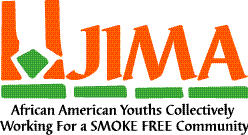
African American youth ranging in age from 13 to 18 came together to
address youth and adult tobacco use among African Americans at the
7th Annual Ujima Tobacco Use Prevention Youth Retreat. Ujima is
one of the Kwannza principles, which means “collective work and responsibility.”
The purpose of the retreat is to bring together African American youth
to train, educate, empower and develop life skills via youth and adult
leadership training, cultural awareness and advocacy to reduce the
tobacco use among African Americans. The youth retreat is funded by
the Center for Disease Control and Prevention and sponsored by the
African American Action Team and the North Carolina Tobacco Prevention
and Control Branch.
Youth attending the retreat participated in three different tracks based
on their level of experience in tobacco prevention and control. First
year youth participated in Tobacco 101- basic tobacco facts. Second
year youth participated in policy and advocacy training, and third year
student and beyond participated in data collection, focusing on the
importance of how to collect and use data for intended purposes. Youth
also participated in a web site development course designing and creating
a web site at the retreat to promote the Ujima youth retreat for other
African American youth across the state.
After two days of training, youth and adults hit the street to use their
newly acquired skills to the community of Greensboro by participating
in a number of community activities. Youth were involved with conducting
opinion surveys about smoke-free restaurants, educating merchants in
African American communities about the North Carolina law on selling
tobacco to minors, and participated in a mock school board presentation
on advocating for 100 percent tobacco free schools.
Table of Contents
Mission Accomplished
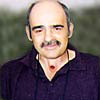
(Editor’s note: This op/ed
was submitted to the Wilmington Star-News.)
In a state like North Carolina, tobacco prevention and
control is a touchy subject. We are the third leading tobacco producing
state with a long strong heritage of dependence on tobacco farming to
sustain our economy. In fact, any number of legislators will tell you that
tobacco money built this state. Unfortunately, what they don’t tell
you is that over a quarter of our high school students (27.8%) currently
smoke and that close to 25,000 additional youth under 18 years of age become
daily smokers each year. Even more shocking is that over 200,000 current
North Carolina youth will eventually die prematurely from smoking.
For people like Jim Martin, this was a travesty. He, and other crusaders
for tobacco prevention who volunteer with S.A.V.E. (Survivors and Victims
of Tobacco Empowerment), work diligently every day to change youth attitudes
and behavior about tobacco use before it is too late.
It was a sad day when North Carolina lost a wonderful man and a
terrific champion for tobacco education last month. Jim Martin
was more than a good man with a good heart: he was a hero. He was
a man full of compassion and dedicated to his self-proclaimed mission.
His mission was to teach young kids about the dangers of tobacco use.
This mission stemmed from his own battle with tobacco, a battle fought
hard, but eventually lost.
Jim traveled around the state as a representative for S.A.V.E. to
tell his story; even though his story was difficult to tell. He
started smoking at the age of 11 and at 45 was diagnosed with cancer of
the larynx. He had his voice box removed and learned how to talk
from his stomach through the hole (stoma) in his neck. It was a
difficult story for him to tell because esophageal speech is hard to learn
and even more complicated to carry out. In his work with S.A.V.E.,
Jim visited and influenced thousands of North Carolina youth. He
bravely shared his story and wasn’t ashamed to show kids the stoma in his
neck, the remnant of what used to be a voice box, and the result of a life
filled with tobacco use. He would tell kids he met that he had a
hole in neck because of 30 years of smoking and that it could happen to
them too. He was straight forward and truthful with them hoping to
change one life.
A friend and S.A.V.E.’s Program Director, Katherine Hampton, shared
her thoughts about Jim: “Once Jim accepted his fate, I don’t think
he ever looked back. He took his life like it was and kept on going
with it. Like a kid who has fallen off a bike, he got right back
on and kept on going despite the fact that he still suffered constant pain
and stiffness in his neck... He used a tragedy and turned it around to
make something good of it. He was a continuous force pushing forward
towards a cause he believed would make a better life for our youth.”
Katherine’s husband, Wade Hampton, also a laryngectomy survivor,
praised Jim’s work, “Jim enjoyed interacting with school-age kids the
most. His presentations were lively, informative and from the heart.
People could feel Jim’s enthusiasm and sincerity about tobacco issues.
[In addition to his presentations] he realized that tobacco education and
prevention needed more acceptance and commitment from the legislature.”
Jim also worked with the Health and Wellness Trust Fund Commission and
worked with legislatures in the state House to assure money was appropriately
spent on tobacco education.
A family physician in North Carolina, Dr. Adam Goldstein, said that
“Jim’s legacy is one of personal courage, because he was willing to proclaim
a vision for a tobacco-free North Carolina. I remember when Jim
went down to the North Carolina legislature and told it like it was, from
his voice-box to their ears. No one, even legislators, could hear
his message without knowing that tobacco is deadly.”
Jim’s story ended abruptly when he died of a massive stroke on July
14, 2003, at 50 years of age. He left behind his wife and two children
who were amazed at the caring outpouring from the tobacco prevention community.
Jim was a modest man who rarely talked about his mission and sought no
recognition. His family didn’t seem to realize the impact he had
on the tobacco prevention movement as well as on youth and adults alike
all over North Carolina.
Jim and other champions for this cause should be praised and honored
for their unselfish acts of compassion. Out of his own personal
tragedy, Jim created hope and shared that with young people from Wilmington
to Asheville and beyond. He wasn’t paid for speaking. He did
it because he cared. In his own words, “I do it because it is what
I want to do. I don’t want them to make the same mistake [I did].”
He felt if he could just reach one kid and help him or her to not start
or to quite smoking while they are still young, he would reach his goal.
Based on feedback from the youth he visited, Jim can rest knowing his mission
was accomplished.
S.A.V.E. is an organization that recruits
and trains tobacco survivors to share their stories with youth in
school and community settings. Their
stories are provocative and real and have influenced many youth across
the state. For more information
about S.A.V.E. go to www.tobaccosurvivors.org or send e-mail to
info@tobaccosurvivors.org.
Amy L. Ward
Environmental Tobacco Smoke Training,
Education and Prevention Program
UNC-CH, Department of Family Medicine
Table of Contents
Urban Legends
Exposed: Glass and Fiber in Spit Tobacco?
(Editor’s Note: As a regular feature
in The Voice Box, we will address Urban Legends about tobacco that
we hear circulating in North Carolina and give the real information
to correct them. So go ahead, ask a silly question, and let us know if
you hear something that you are not sure is true. )
Myth: I
have often heard educators and speakers say that tobacco companies
put fiberglass or glass shards in spit tobacco to produce microscopic
cuts in one’s mouth so that nicotine is absorbed quicker, and therefore
addition is quicker. I understand this is an urban legend, but
would like some proof to back it up when trying to dispel the myth.
Can you please help?
Reality:
Paul Turner, Oral Health America, states that, "there is no documented
evidence that manufacturers add fiberglass, glass or any other non-organic
compound that would induce lesions or cuts within the mouth of the user."
There are a few schools of thought on how this became a myth. Paul
Turner speculates on how this urban legend began. He noted that some companies
were re-adding extra tobacco remnants at the end of the every day to
maximize production. These “floor sweepings,” as they were called,
were done in “clean rooms” however the idea of “floor sweepings” may have
contributed to this myth. Second, tobacco leaves themselves are
fairly abrasive and are known to cause soft-tissue abrasions in the mouth,
without any additional ingredients. Third, part of a detailed compound
analysis identified silicates in the particulate matter of spit tobacco.
While silicates are used to make glass, they are also found in sand and
are likely a byproduct of the tobacco farming process and actually organic
matter. This sand would also contribute to the development of cuts
and lesions in the mouth.
Sources:
- Bowles WH, Wilkinson MR, Wagner MJ,
Woody RD, 1995. Abrasive particles in tobacco products: a possible
factor in dental attrition. Journal of American Dental Association,
March 1995: 126 (3); 327-31.
- Oral Health American’s National Spit
Tobacco Education Program.
If anyone else out there has more specific information we
would love to share it with everyone.
If you would like to submit a silly question or let
us know if you hear something that you are not sure is true, send it to
Julie Helsabeck
and we will consider it for a future issue.
Table of Contents
WEB SITE OF THE MONTH
(Editor’s Note: If you have a web
site you would like to recommend, send it to Julie Helsabeck and
we will consider it for a future issue.)
In late June the Tobacco Prevention and Control Branch
launched a new website, WorkingSmokeFree.
- Update 12/2008: The WorkingSmokeFree site has been retired.
Table of Contents
FYI: Recommended Resources
1. "Tobacco Control for Clinicians Who Treat Adolescents," A Cancer
Journal for Clinicians
James D. Sargent, MD; Joseph R. DiFranza, MD. Volume 53,
Number 2, March/April 2003. pages 102-123.
Recommended by Sally Herndon Malek, MPH, Branch Head, NC Tobacco Prevention
and Control Branch.
Follow link to read in entirety:
CAonline.AmCancerSoc.org
2. Campaign for Tobacco Free Kids: Updated "Saving Lives" Video
TPCB has just received an updated version of "Tobacco Prevention: Saving
Lives & Saving Money" CD. This CD contains an electronic version
of the video, which is a shorter version. It also contains updated brochures,
fliers, and fact sheets. For more/supplemental information and to request
a copy, please visit Campaign for Tobacco-Free Kids web site:
www.tobaccofreekids.org
Table of Contents
Upcoming Events:
September 2003 - March 2004
October 9, 2003
Teen Summit
Robeson County Public Schools
Location and
Time TBD
Contact: Bronwyn Glenn Lucas at 919-683-3088 or bronwyn@dacinc.org
October 13, 2003
Teen Empowerment
Summit United We Stand Against Tobacco, Drugs and Teen Violence
by Onslow County Public Schools in partnership
with Camp Lejune Schools
Location and Time TBD
Contact: Steve Johnson at 910-790-9949 or stevejohnson@whatswhat.org
or Terry Quinn at 252-439-8600 or terryquinn@whatswhat.org
October 13, 2003
Tobacco Training
First Health of the Carolinas
Richmond, Hoke, Montgomery and Moore
Location and
Time TBD
Contact: Bronwyn Glenn Lucas at 919-683-3088 or bronwyn@dacinc.org
October 17, 2003
Adult Leader
Training
Buncombe County
Foster Seventh Day Adventist Church Conference Center, Time TBD
Contact: Jeanne Dairaghi at 828-232-4424
or Jeanne.Dairaghi@buncombecounty.org
October 18, 2003
Tobacco
Training
Union County
Location and Time TBD
Contact:
Bronwyn Glenn Lucas at 919-683-3088 or bronwyn@dacinc.org
October 20, 2003
Tobacco
Free Schools Youth Panel
Durham
Location and Time TBD
Contact:
Bronwyn Glenn Lucas at 919-683-3088 or bronwyn@dacinc.org
October 20-22, 2003
Teaming
up for 100% Tobacco Free Schools Workshop - Central Region
Durham Hilton
Contact: Suzanne DePalma at 919-715-4409 or suzanne.depalma@ncmail.net
for (questions regarding the conference) or Frances Armstrong at 919-715-4268
or frances.armstrong@ncmail.net (for questions regarding registration
or lodging)
October 25, 2003
African
Americans and Tobacco
Raleigh
St. Augustine's College, Time TBD
Contact: Bronwyn Glenn Lucas at 919-683-3088 or bronwyn@dacinc.org
October 25, 2003
Media
Literacy/Advocacy Training I
Location and
Time TBD
Contact: Steve Johnson at 910-790-9949 or stevejohnson@whatswhat.org
or Terry Quinn at 252-439-8600 or terryquinn@whatswhat.org
October 25, 2003
Youth
Advocacy Training
Location and
Time TBD
Contact: Jeanne
Dairaghi at 828-232-4424 or Jeanne.Dairaghi@buncombecounty.org
November 4, 2003
Tobacco
101/Youth Advocacy Training
Location and
Time TBD
Contact: Jeanne
Dairaghi at 828-232-4424 or Jeanne.Dairaghi@buncombecounty.org
November 8, 2003
Media
Literacy/Advocacy Training II
Location and
Time TBD
Contact: Steve Johnson at 910-790-9949
or stevejohnson@whatswhat.org or
Terry Quinn at 252-439-8600 or terryquinn@whatswhat.org
November 12, 2003
Tobacco-Free
Schools Youth Panel
Asheville
Location and Time TBD
Contact: Jeanne
Dairaghi at 828-232-4424 or Jeanne.Dairaghi@buncombecounty.org
November 12-14, 2003
Teaming
up for 100% Tobacco Free Schools Workshop - Western Region
Asheville,
Holiday Inn Sunspree
Contact: Suzanne DePalma at 919-715-4409 or suzanne.depalma@ncmail.net
for (questions regarding the conference) or Frances Armstrong at 919-715-4268
or frances.armstrong@ncmail.net (for questions regarding registration or
lodging)
November 15, 2003
African
Americans and Tobacco
Winston-Salem
University, Time TBD
Contact: Bronwyn Glenn Lucas at 919-683-3088 or bronwyn@dacinc.org
December 1-3, 2003
Teaming
up for 100% Tobacco Free Schools Workshop - Eastern Region
Wilmington,
Hilton Riverside
Contact: Suzanne DePalma at 919-715-4409 or suzanne.depalma@ncmail.net
for (questions regarding the conference) or Frances Armstrong at 919-715-4268
or frances.armstrong@ncmail.net (for questions regarding registration or
lodging)
January 10, 2004
Tobacco
101 for Youth Leaders
Location and
Time TBD
Contact: Steve Johnson at 910-790-9949
or stevejohnson@whatswhat.org or
Terry Quinn at 252-439-8600 or terryquinn@whatswhat.org
January 17, 2004
Tobacco
101 for Youth Leaders
Location and
Time TBD
Contact: Steve Johnson at 910-790-9949
or stevejohnson@whatswhat.org or
Terry Quinn at 252-439-8600 or terryquinn@whatswhat.org
February 21, 2004
Media
Literacy/Advocacy Training I
Location and
Time TBD
Contact: Steve Johnson at 910-790-9949
or stevejohnson@whatswhat.org or
Terry Quinn at 252-439-8600 or terryquinn@whatswhat.org
March 20, 2004
Media
Literacy/Advocacy Training II
Location and
Time TBD
Contact: Steve Johnson at 910-790-9949
or stevejohnson@whatswhat.org or
Terry Quinn at 252-439-8600 or terryquinn@whatswhat.org
Table of Contents
If you have feedback or comments please
let us know, OR you can contribute your own story about tobacco prevention
and control in N.C. Please send to Julie Helsabeck.


